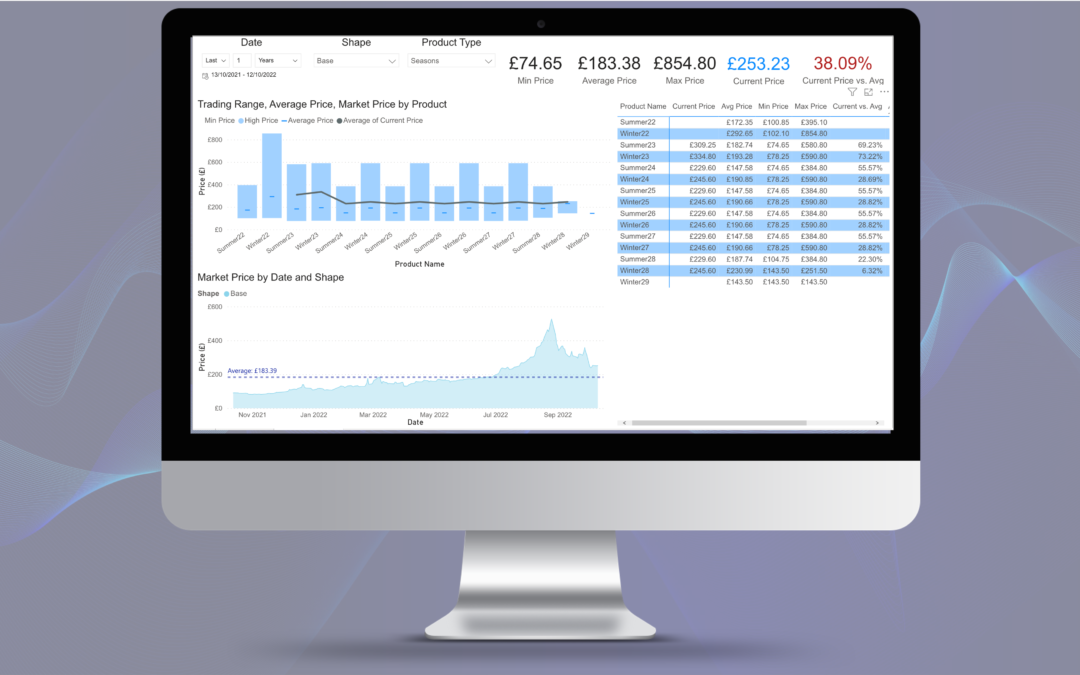Commodity and financial markets rarely get put on hold. Yes, financial exchanges still have the concept of “limit up” or “limit down” when trade prices exceed certain limits, trade stops for the day. However, a 6-month freeze is extremely rare, particularly for retail markets. Instead, central banks may get directly involved in market activity to support a currency, but they rarely close the door and freeze a financial instrument. Yet, this is what has happened in the UK energy market and this freezing of near-term retail activity will have knock on impacts on the wholesale market liquidity and confidence.
Current UK Price Cap Situation
As we know the UK government has announced that for all eligible business the maximum discount is capped at £345/MWh for electricity and £91/MWh for gas. Not all corporates and industrials are eligible for these price caps and there is further complexity to consider where there is flex procurement or electricity generation exported.
Plenty have written about the short-term implications and the impacts of the cap to individual organisations. So rather than sum up what we know and don’t know we wanted to get the crystal ball out and consider on what might happen in 6 months’ time, after the price cap.
Demand Destruction Scenarios
Demand destruction means a decrease in demand due to high prices or limited supply. Consider the scenario when there is an oil crisis and the price rises, this inherently corresponds to less people driving. This demand destruction can now be found in the electricity and gas market.
It is not easy to look beyond April 2023, but there are two clear scenarios emerging which will amplify demand destruction:
- Increase in behavioural change activities to reduce energy usage: There will certainly be demand destruction due to high energy prices, even at capped levels which are approx. 10x the cost of April 2020. To reduce their cost impact, consumers and businesses alike will conserve their energy through various behavioural change activities. Unfortunately, there is likely to be significant decline in businesses, small to large, due to high cost and or energy shortages impacting energy intensive organisations in the manufacturing, retail, telco, and health sectors.
2. High interest rates affecting borrowing & decarbonisation projects: A compounding factor which could increase demand destruction is the higher cost of borrowing due to high interest rates likely to continue to increase over the upcoming months. This would further accelerate demand destruction and business decline. Additionally, with higher cost of borrowing this could potentially reduce the amount of investments affordable for businesses to decarbonise in the private sector. Sadly, some sectors might be tempted to put decarbonisation projects on hold whilst facing the economic headwind.
Flex Procurement Implications
Demand destruction in the UK alone might not necessarily result directly in considerably lower energy prices beyond April 2023 as the Summer 2023 power price is currently approx. £325 a MWh and gas is £120 a MWh. This is because UK prices are led by European gas and power prices and the arbitrage between the two means they are rarely out of synch.
One major question is, should organisations review their hedges in flex procurement post April 2023 when current prices are higher than the price cap? Many will be revising their flex procurement strategy based on the forward energy prices for 2023, 2024 and so forth. However, the price cap makes the decision criteria of when to purchase and how much to buy a more complex decision than in the past.
Cost Mitigation
Right now, it seems likely that the cost of the government price cap might not be stretchable beyond the next 6 months. This might mean that competitive supply markets resume post April 2023, but they will certainly look different. One potential outcome might be suppliers share the energy forecast risks with their customers, with accurate demand forecasting being rewarded more than ever before. Including availability of a wider range of flexible supply products typically linked with energy saving projects.
We hope these insights into the what ifs after April 2023 provide some clarification for you and your organisation. If you’d like to learn how the Utilidex platform can support your reduction in cost, consumption and carbon or manage your flex procurement risk, please get in touch with Vanessa Adams at [email protected] today!

